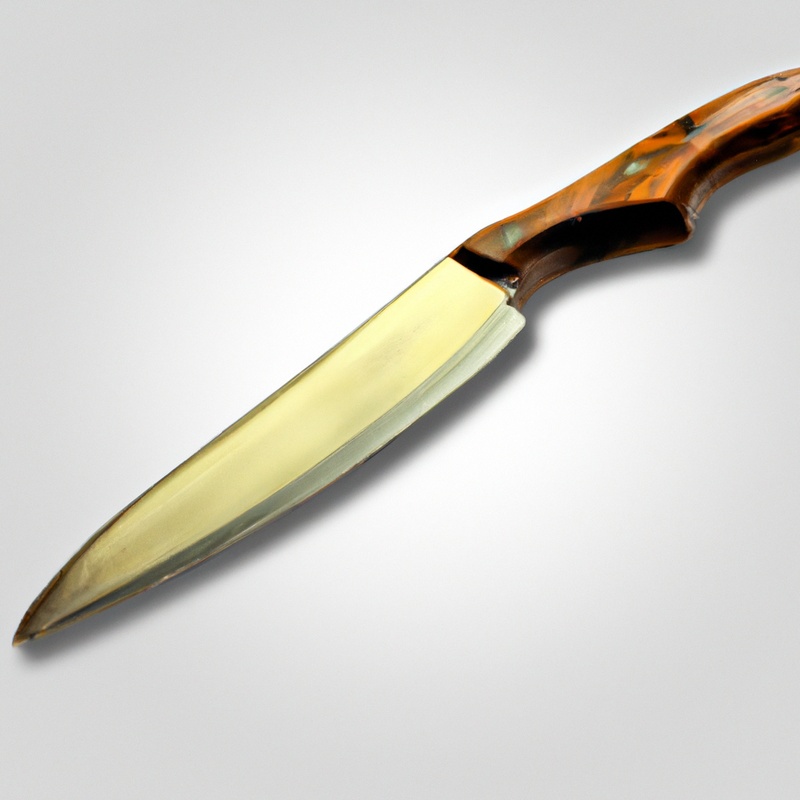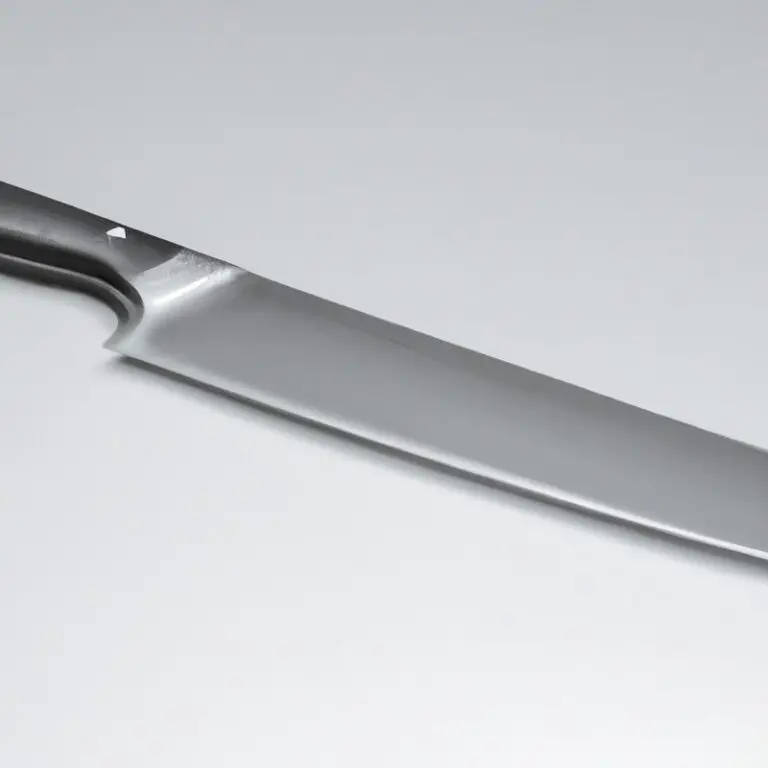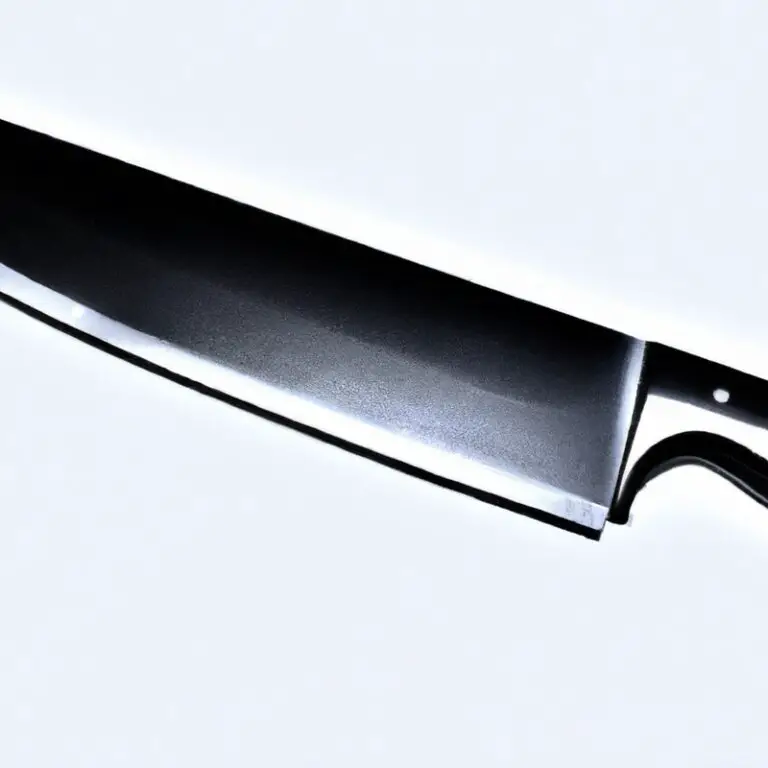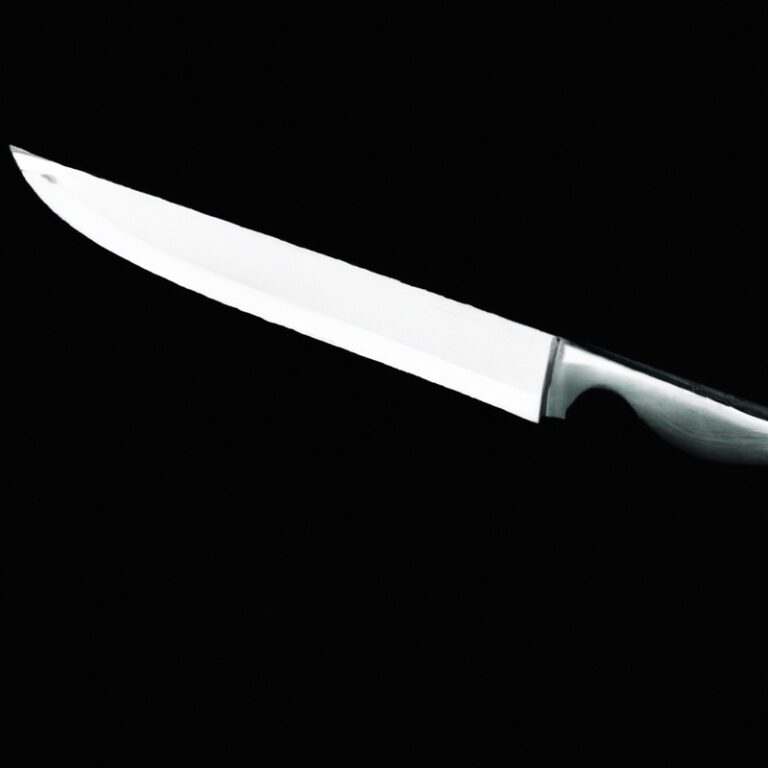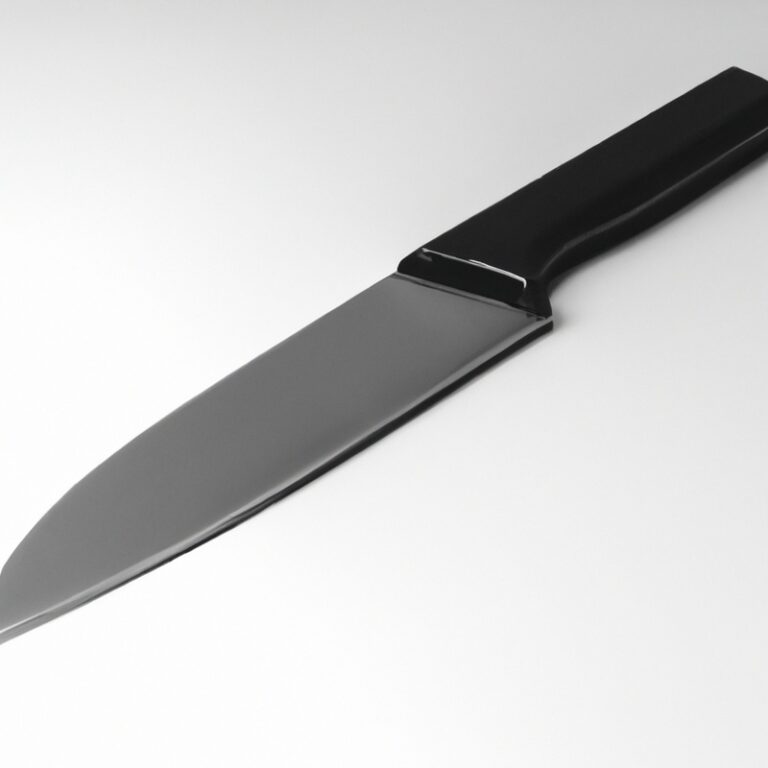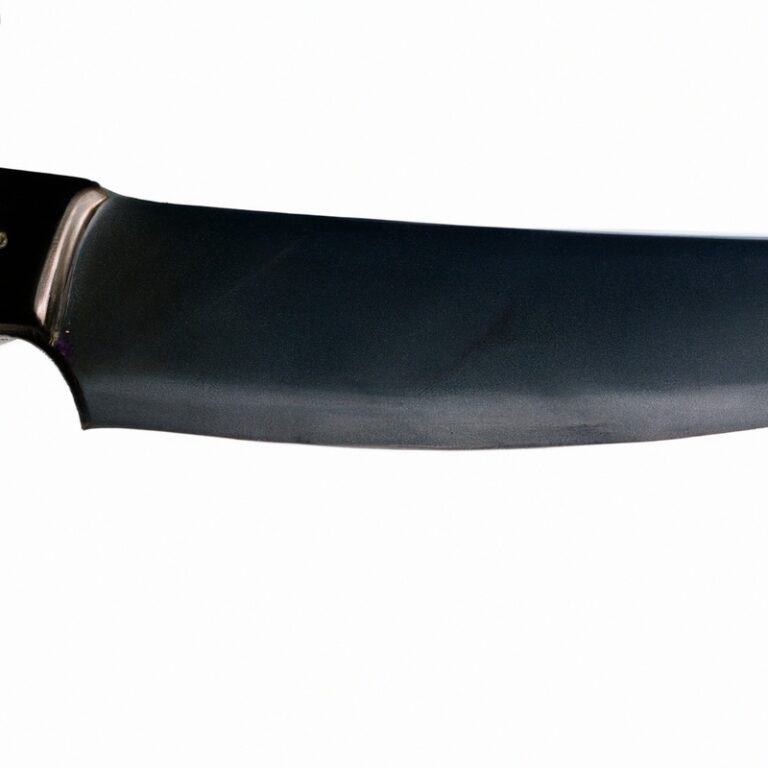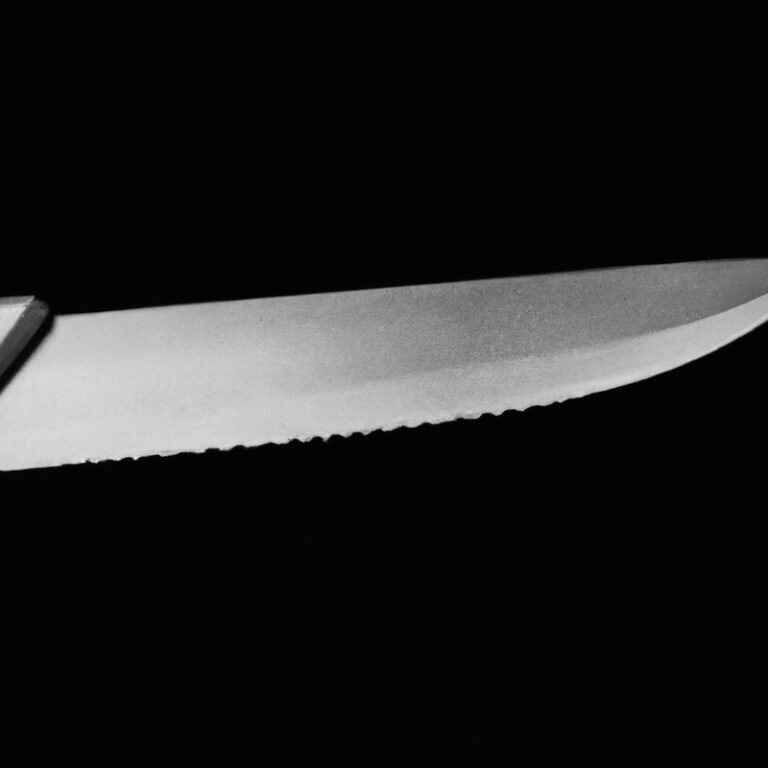How Do I Achieve Consistent And Even Slices Of Roast Meat Using a Serrated Knife?
Key Takeaways:
- Use a long, serrated knife with a sharp blade for even slices of roast meat.
- Let the meat rest for a few minutes after cooking to achieve better-slicing results.
- Apply consistent pressure while slicing to maintain uniform thickness.
- Cut against the grain of the meat for tender and evenly sliced pieces.
Are you tired of serving up uneven slices of roast meat that leave half your guests with the overcooked end and the other half with the undercooked middle? Well, worry no more because I’ve got the ultimate solution: a serrated knife.
I’ve spent years perfecting the art of slicing roast meat with a serrated knife.
In this article, I’ll share my top tips for achieving consistent even slices every time. From choosing the right knife to mastering the technique and troubleshooting common issues, I’ve got you covered.
So let’s dive in and slice like a pro!
| Steps | Benefits |
| 1. Start with a sharp serrated knife | – Ensures clean and smooth cuts |
| 2. Hold the knife at a slight angle | – Allows the blade to glide through the meat |
| 3. Apply even and gentle pressure | – Helps maintain the shape of the roast |
| 4. Use a long, sawing motion | – Prevents tearing or shredding of the meat |
| 5. Slice against the grain | – Maximizes tenderness and reduces chewiness |
Choosing the Right Serrated Knife
Understanding serrated knife features
Understanding serrated knife features is essential for achieving consistent and even slices of roast meat. Serrated knives have small, jagged teeth along the blade that grip and cut through tough surfaces, such as the crust of bread or the outer layer of meat.
The number and size of the serrations vary between knives, affecting their cutting ability.
Additionally, the length and style of the knife can impact the ease of use and overall performance. It’s important to choose a serrated knife that suits your specific slicing needs.
Recommended serrated knife length and style
When it comes to choosing a serrated knife for slicing roast meat, the recommended length is usually around 8 to 10 inches. This length provides a good balance between maneuverability and cutting surface.
As for the style, a knife with larger, deep-scalloped serrations tends to work best for slicing through tougher cuts of meat.
These serrations grip the meat firmly, ensuring a clean and even cut. However, it’s important to note that personal preference plays a role in choosing the right length and style, so try different options to find what works best for you.
Preparing the Roast Meat for Slicing
Allow meat to rest before slicing
Allowing the meat to rest before slicing is essential for achieving consistent and even slices. When you remove the roast from the oven or grill, it’s important to let it sit for about 10 to 15 minutes.
This resting period allows the juices to redistribute throughout the meat, resulting in a more flavorful and tender slice.
It also helps to retain moisture, preventing the meat from drying out. During this time, cover the roast loosely with aluminum foil to keep it warm.
Resting the meat ensures that each slice will be juicy and delicious.
Trimming excess fat and uneven parts
To trim excess fat and uneven parts from your roast meat before slicing, start by using a sharp chef’s knife to remove any large, visible pieces of fat. Simply slide the knife along the surface of the meat, following the natural contours, and gently separate any fat or connective tissue from the lean meat.
If you encounter any uneven parts, such as thicker sections, try to level them out by carefully removing excess meat.
This will help ensure that your slices are consistent in thickness and cook evenly. Remember to work slowly and pay attention to detail as you trim the meat, aiming for a clean and uniform surface.
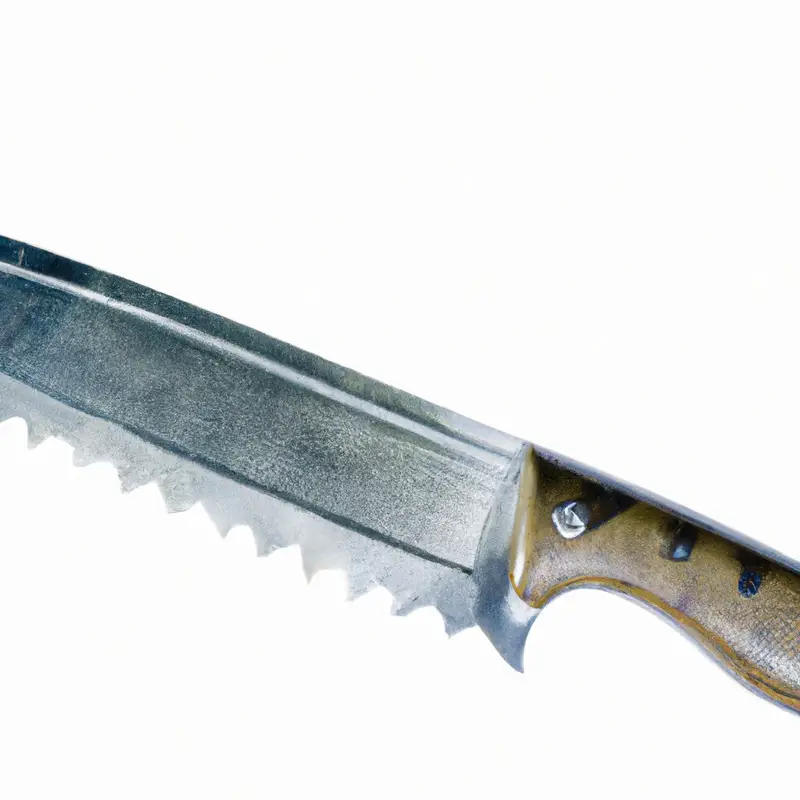
The Technique for Slicing Roast Meat
Proper grip and control of the knife
To achieve consistent and even slices of roast meat using a serrated knife, the proper grip and control of the knife are essential. Here’s how you can achieve it:
- Hold the knife firmly with your dominant hand, wrapping your fingers around the handle for a secure grip. This will give you better control over the knife’s movements.
- Place your other hand on top of the blade, with your fingers resting lightly on the flat side. This hand will guide the knife as you slice through the meat.
- Keep your wrist straight and your arm relaxed. This will ensure smooth and precise cuts, reducing the risk of accidents.
- When slicing, apply gentle pressure with the knife and use a sawing motion rather than applying too much force. This will help the serrated edge cut through the meat without tearing it.
- Take your time and maintain a consistent speed while slicing. Rushing can lead to uneven cuts and less control over the knife.
Remember, practice is the key to mastering this technique. With time and experience, you’ll be able to achieve consistently perfect slices of roast meat.
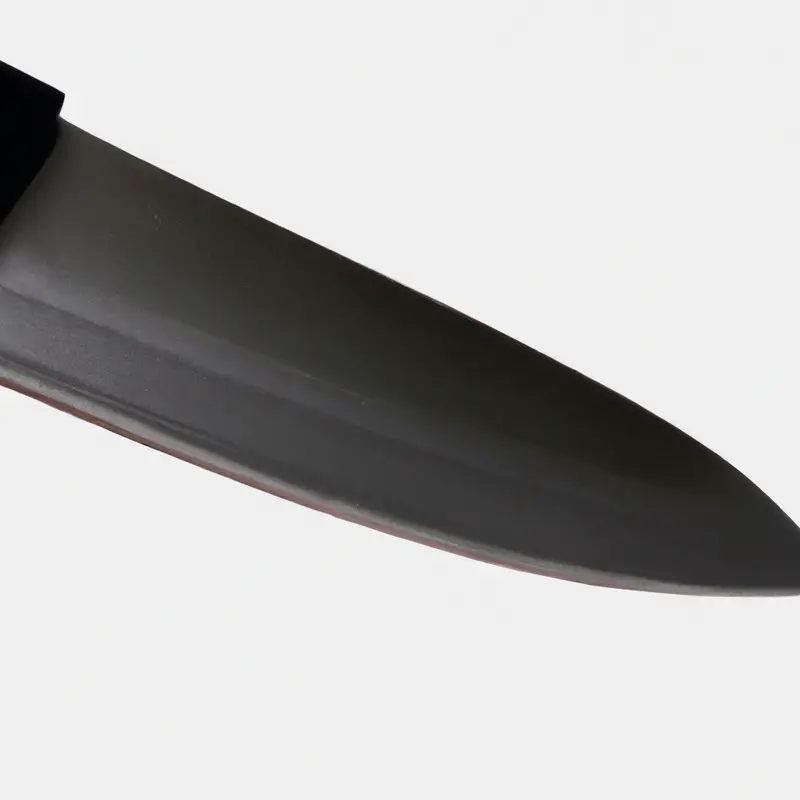
Slow and steady slicing motion
When it comes to achieving consistent and even slices of roast meat, one crucial aspect is maintaining a slow and steady slicing motion. This technique helps to ensure that each slice is clean and uniform.
Start by gripping the knife firmly and positioning it at a slight angle.
Apply gentle pressure and use a smooth, fluid motion to guide the knife through the meat. Avoid rushing or using jerky motions, as this can lead to uneven slices.
By implementing a slow and steady slicing motion, you’ll be on your way to perfectly sliced roast meat every time.
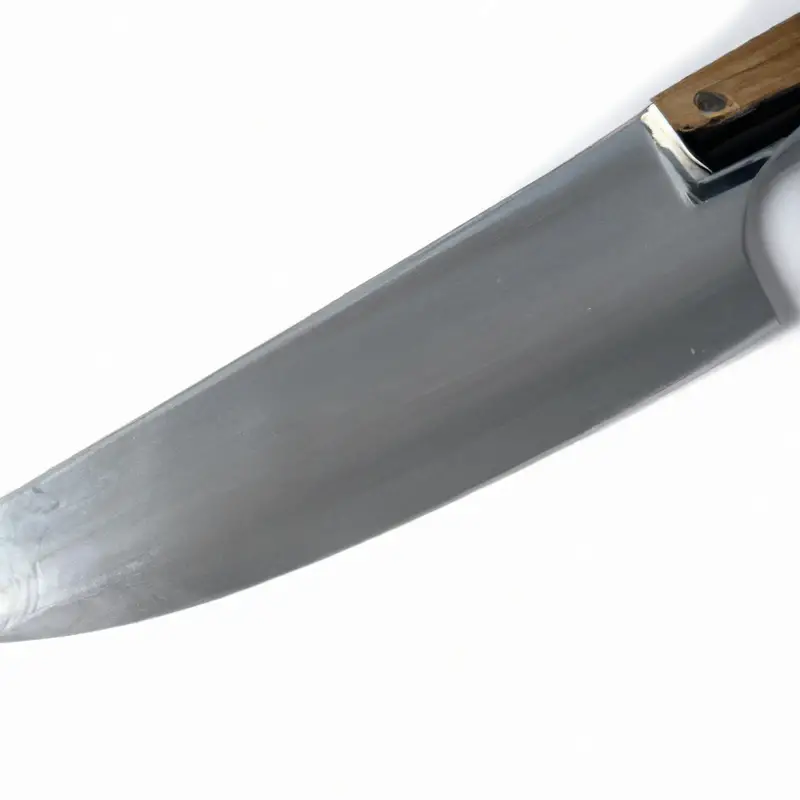
Maintaining the Serrated Knife
Regular sharpening of the knife
Regular sharpening of the knife is essential for achieving consistent and even slices of roast meat. To maintain the sharpness, I recommend using a serrated knife sharpener designed specifically for serrated blades.
Sharpen the knife using the recommended technique, following the instructions provided.
Be sure to regularly check the sharpness of the knife and sharpen as needed. Keeping your serrated knife sharp will not only make slicing roast meat easier and more efficient, but it will also prolong the life of your knife.
Remember, a sharp knife is a safe knife!
Proper storage to prevent damage
Proper storage is key to prevent damage to your serrated knife. Here are some tips to keep in mind:
- Store your knife in a knife block or sheath to protect the blade from bumps and scratches. This will also prevent accidental cuts when reaching for other utensils.
- Avoid storing your knife loosely in a drawer, as it can easily get damaged or cause injuries. If you must store it in a drawer, use a knife guard or a dedicated knife tray to keep the blade protected.
- Keep your knife away from moisture to prevent rusting. Dry it thoroughly after each use and store it in a cool, dry place.
- Avoid placing heavy objects on top of your knife, as this can result in dents or bends in the blade. Store it in an area where it won’t be crushed or damaged.
Practice Makes Perfect
Importance of practice for consistent results
Achieving consistent results in slicing roast meat with a serrated knife requires practice. The more you practice, the better you become at controlling the knife and achieving even slices.
With practice, you develop muscle memory and improve your technique, which leads to more consistent and precise cuts.
So, don’t be discouraged if your first attempts are not perfect. Keep practicing, and soon you’ll be able to slice roast meat with ease and achieve consistent and even results every time.
Experimenting with different cuts and techniques
Experimenting with different cuts and techniques is key to achieving consistent and even slices of roast meat using a serrated knife. Try these approaches:
- Vary the angle: Experiment with different slicing angles to find the one that works best for the specific roast meat you’re slicing. It may vary based on the tenderness and size of the meat.
- Adjust pressure: Try applying varying levels of pressure while slicing. Too much pressure can crush or tear the meat, while too little may result in uneven slices. Find the right balance for a clean and even cut.
- Practice different cuts: Explore different cutting techniques like a straight cut, diagonal cut, or a sawing motion. Each technique may yield different results, so try them out to find your preferred method.
- Cut against the grain: Identify the direction of the grain in the roast meat and slice against it. This helps ensure tender and even slices.
- Test different thicknesses: Experiment with slicing the meat into different thicknesses to find the ideal thickness that suits your taste and desired presentation.
Remember, practice makes perfect. Don’t be afraid to try different approaches and techniques until you achieve the consistency and evenness you desire in your roast meat slices.
Troubleshooting Tips
Handling tougher sections of meat
Handling tougher sections of meat can be a challenge, but with the right techniques, you can achieve even slices. One approach is to use a serrated knife with longer teeth, as it can easily cut through tough fibers.
Another method is to slice against the grain of the meat, which helps break up the muscle fibers for a more tender result.
Applying consistent pressure and using a slow, steady slicing motion will also ensure uniform slices. Remember to practice and experiment with different cuts to find what works best for you.
Dealing with unevenly cooked meat
Dealing with unevenly cooked meat can be frustrating, but there are a few things you can do to address this issue. First, check the internal temperature of the roast using a meat thermometer to ensure it’s cooked to the desired doneness.
If portions of the meat are undercooked, you can return them to the oven or stovetop for further cooking.
Another option is to cut the meat into smaller pieces and finish cooking them individually. Additionally, you may consider adjusting the cooking time or temperature for more even results.
Practice and experimentation will help you perfect your technique in dealing with unevenly cooked meat.
Final Verdict
Achieving consistent and even slices of roast meat using a serrated knife requires understanding the features and choosing the right knife, allowing the meat to rest before slicing, trimming excess fat and uneven parts, practicing proper grip and control of the knife, using the correct angle and pressure for slicing, maintaining the knife through regular sharpening and proper storage, and practicing consistently. By following these tips and techniques, you can master the art of slicing roast meat with precision and achieve consistent results every time.
Remember, practice makes perfect!

